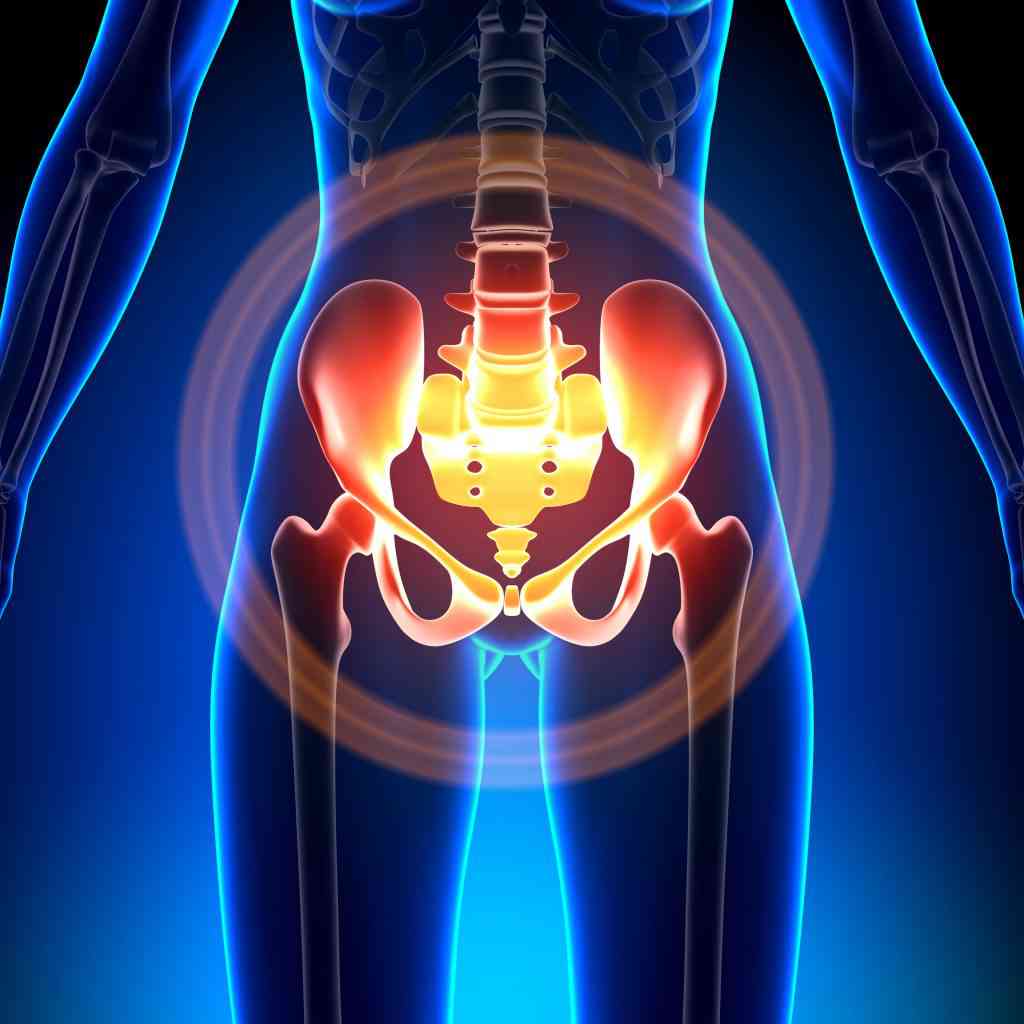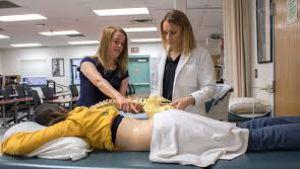Understanding the underlying causes of pelvic floor dysfunction—a disorder with several causes—including physical, hormonal, and environmental elements—helps one to properly address the problem and start a road towards recovery using the suitable therapies, including pelvic floor physical therapy.
One of the most prevalent causes of this dysfunction, for example, is childbirth since the delivery process may strain and weaken the pelvic floor muscles, therefore reducing the support for pelvic organs and maybe causing discomfort. Furthermore, hormonal changes during menopause might help to weaken these muscles and tissues, so women should understand the need of prophylactic treatment and rehabilitation.
Pelvic Floor Dysfunction Causes
To better understand the various causes of pelvic floor dysfunction, consider the following list of common contributing factors:
- Childbirth and pregnancy-related changes
- Hormonal fluctuations, especially during menopause
- Obesity and associated health issues
- Chronic heavy lifting or high-impact activities
- Neurological conditions or injuries
Although this list is not all-encompassing, it helps people to understand the spectrum of elements that could cause pelvic floor dysfunction and so help them to find risk factors in their own life and implement suitable preventative action. Knowing these causes is crucial since it not only helps medical professionals create a customized treatment plan including successful strategies like pelvic floor physical therapy, but it also enables people with the knowledge required to take charge of their health and well-being.
Early on recognition and addressing of these factors will help people greatly increase their quality of life and reduce the effect of pelvic floor dysfunction on their everyday activities.
What is internal pelvic floor physical therapy?
Targeting the pelvic floor muscles in a way that transcends conventional external therapy approaches, internal pelvic floor physical therapy is a specialized treatment approach whereby a trained and licensed therapist performs internal assessments and manual therapy techniques able to release tension, increase circulation, and improve muscle function.
Since the complex network of muscles and connective tissue in the pelvic area is so important for general pelvic health and wellness, this particular kind of physical therapy may be used to treat many conditions including pelvic pain, urinary incontinence, and sexual dysfunction.
Using methods including digit-based vaginal or rectal assessments, biofeedback, and myofascial release, the clinician can help the patient to have a complete awareness of their particular problem and create a customized treatment plan that targets their particular needs.
RELATED ARTICLE: Is Pelvic Floor Therapy Covered By Insurance?
What to expect at pelvic floor physical therapy?
The first phases usually consist of a thorough assessment whereby your therapist, a qualified professional with knowledge in pelvic floor disorders, will ask a series of questions meant to better understand your medical history, lifestyle, and specific concerns related to pelvic health that you may be experiencing, which may include issues such incontinence, pain during intercourse, or difficulty with bowel movements.
Following the assessment of your symptoms and any physical limitations, your therapist may proceed to perform a physical examination, which could involve both external and, depending on your comfort level, internal assessments, so gaining a clear perspective on the strength and function of your pelvic floor muscles. It is imperative to note that this process is designed with your comfort and privacy in mind, so communication with your therapist regarding any discomfort is essential.
| Phase | Description |
|---|---|
| Initial Evaluation | Comprehensive assessment of symptoms and medical history. |
| Physical Examination | External and possibly internal vaginal or rectal assessments. |
| Treatment Plan | Personalized exercises and strategies will be developed. |
Your therapist will probably introduce a variety of specialized exercises targeted at strengthening the pelvic floor muscles, increasing their awareness, and helping improve control over them as the sessions go on, which may be matched by techniques meant to encourage relaxation and lower any tension possibly causing your symptoms.
Pelvic Floor Physical Therapy in NYC
New York City, specifically pelvic floor disorders it has some of the best medical, mental and wellness centers focused on treating fertility disorders, pregnancy, menopausal symptoms and more.
There are dozens of reasons why a patient should visit the New York Pelvic Floor Physical Therapy clinic. Many patients are experiencing pain and swelling associated with removing a uterus and ovaries.
New York Pelvic Floor Physical Therapy clinics can also provide additional treatment options, including infertility treatments and assisted reproductive technologies. Pelvic floor exercises are safe for women of all ages and can be performed in the comfort of one’s home. This convenient treatment option gives patients an added boost when they feel weak due to a lack of energy or pain from pelvic floor muscle contractions.
Clinics Located in Omaha
Pelvic Floor Physical Therapy in New York’s premier treatment program. Invented by Jane W. Fauxtfe, Ph.D., in 1947, Pelvic Floor Physical Therapy NY is one of only two approved specialty clinics in the country. The other clinic is located in Omaha, Nebraska.
“PHYSICS THERAPY Services is the bedrock of Thrive.” Jane W. Fauxtfe, Ph.D. clinical nurse specialist at a private, holistic clinic in New York City. She is also the owner of private practice. Pelvic Floor Physical Therapy NYC is a non-profit agency that provides low-cost, medically proven treatments and education to women who have infertility through age 40.
Pelvic floor therapy is a treatment option for women who have recently had a hysterectomy. Had a c-section, had a significant incision made in their pelvic region, had their fallopian tubes removed, or were diagnosed with endometriosis.

Exercises to Strengthen the Pelvic Floor Muscles
The therapist will assess your muscular control and identify areas that need targeted attention by externally examining the pelvis and abdomen and assessing pelvic muscle strength. This evaluation sets a benchmark for your development and starts aw-promoting workouts. Depending on your comfort and the conditions, internal pelvic floor tests may be performed to better understand muscle and functional dynamics.
- Kegel Exercises: These are fundamental pelvic floor exercises that involve contracting and relaxing the pelvic floor muscles.
- Bridging: This exercise strengthens not just the pelvic floor but also the glutes and abdominal muscles.
- Clamshells: Lying on your side with knees bent, this exercise effectively targets the pelvic floor and surrounding hip muscles.
- Wall Sits: Leaning against a wall and holding a seated position engages the pelvic muscles while also working on strength and endurance.
- Squats: Performing squats engages the entire pelvic region and should be executed with proper form to ensure safety and effectiveness.
Apart from these main exercises, you should also include mindfulness and breath control into your program as, when suitable, concentrating on your breathing can improve the efficacy of every action and help the pelvic floor muscles to relax.

Do i need to shave for pelvic floor physical therapy?
Although some people would want to be clean-shaven for their own comfort, it is not required to shave before visiting a Pelvic Floor Physical Therapy session since the professionals in this field are used to working with clients of all grooming practices and will create a polite and encouraging environment that promotes healing and recovery.
Here are some key ideas to keep further clarity in mind about shaving before your Pelvic Floor Physical Therapy session:
- Shaving or not is a personal decision best depending on what you feel comfortable with.
- Your physical therapist will value your personal grooming decisions since they are a qualified expert concentrated on your health and welfare.
- Recall that the main goal of the therapy is to help you with pelvic problems, so your attention should be on the treatment itself rather than on grooming standards since your shaving technique is not the main one used in this regard.
In essence, your first concern should be your own comfort with your body and the therapeutic road ahead; hence, you should feel free to decide what makes you most at peace when you show up for your visit. Remember, your path towards better pelvic health is what counts most; your therapist will be there to help you at every stage.
Frequently Asked Questions
Whose pelvic floor physical therapy will help?
Pelvic floor physical therapy helps people with pelvic pain, incontinence, pregnancy-related problems, or post-operative rehabilitation.
For what conditions is pelvic floor physical therapy used?
Among common disorders include urine incontinence, fecal incontinence, pelvic discomfort, prolapse, and consequences after surgery or childbirth.
During sessions of pelvic floor physical therapy, which approaches are applied?
Techniques might call for manual therapy, pelvic muscle strengthening and relaxation exercises, biofeedback, and pain management techniques.
Usually, what is the number of sessions of pelvic floor physical therapy required?
Although individual and condition determine the number of sessions, generally speaking, depending on the degree and kind of the problem, they range from 6 to 12 visits.
Does pelvic floor physical therapy hurt?
A trained therapist will make sure the treatment is as comfortable as possible even if some people may feel slight discomfort from tightness or tenderness.
Where may one locate a qualified pelvic floor physical therapist?
Searching professional groups like the American Physical Therapy Association or asking your doctor for referrals will help you identify a qualified therapist.
What to expect at first pelvic floor physical therapy?
The therapist will perform a physical assessment, which may include an external examination of the pelvis and abdomen and pelvic muscle strength testing, to determine your level of muscle control and any areas that may need focused intervention. This evaluation helps set a baseline for your progress and begins any necessary exercises to promote aw. Internal examinations may be performed to better understand your pelvic floor’s muscular and functional dynamics, depending on your comfort and the conditions being addressed.
Related Article: 5 Point Physical Therapy in NYC
